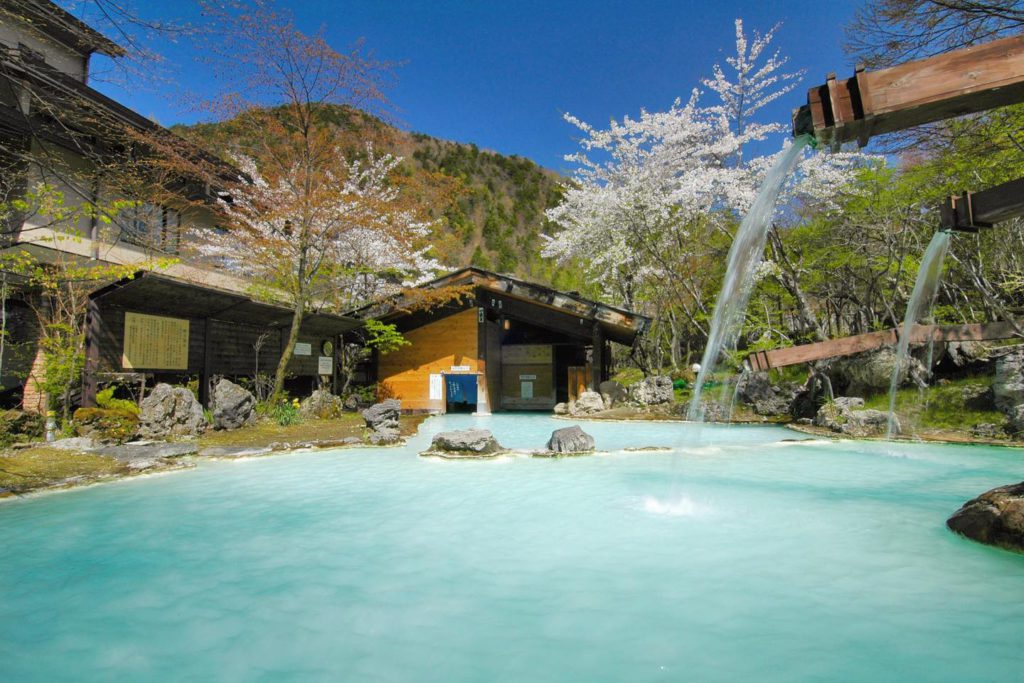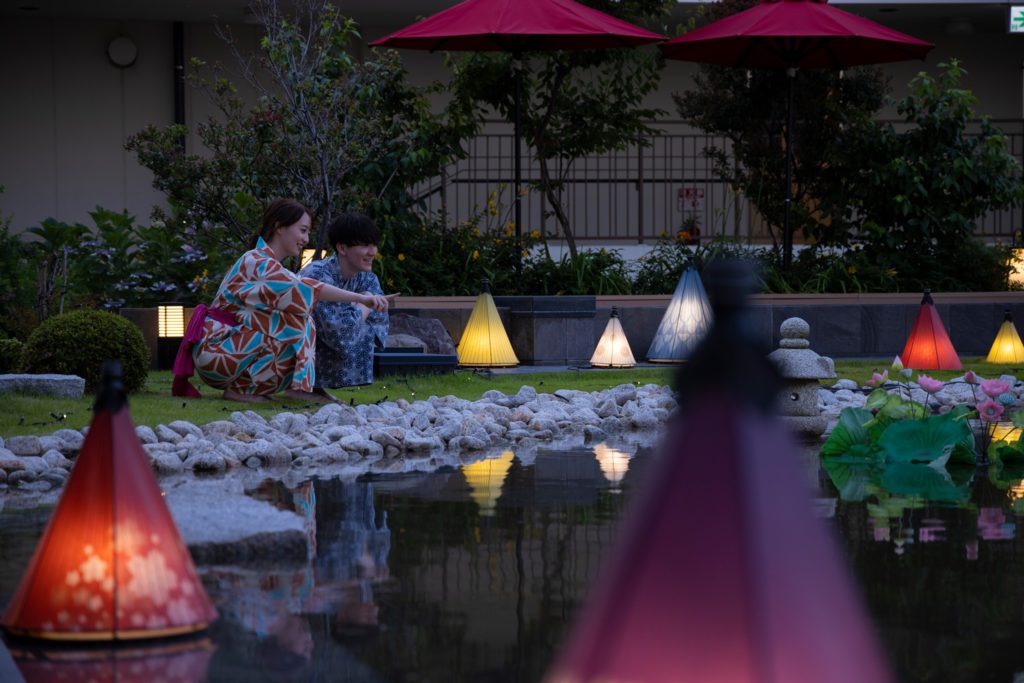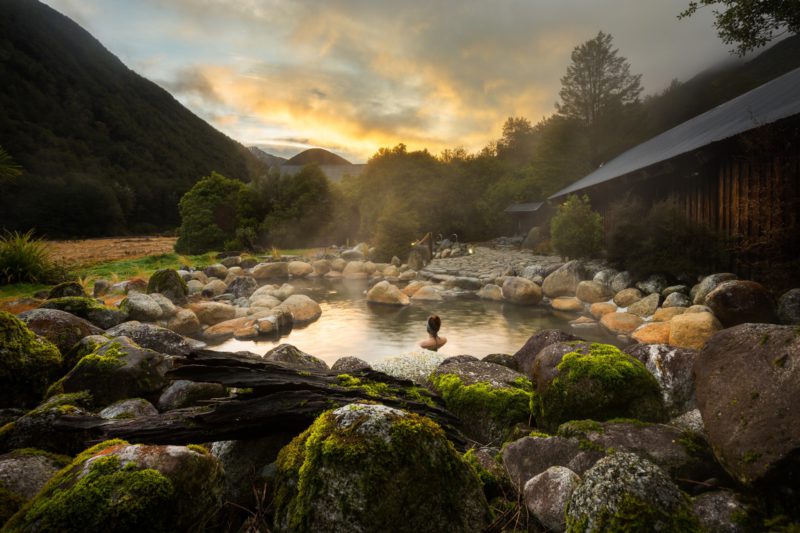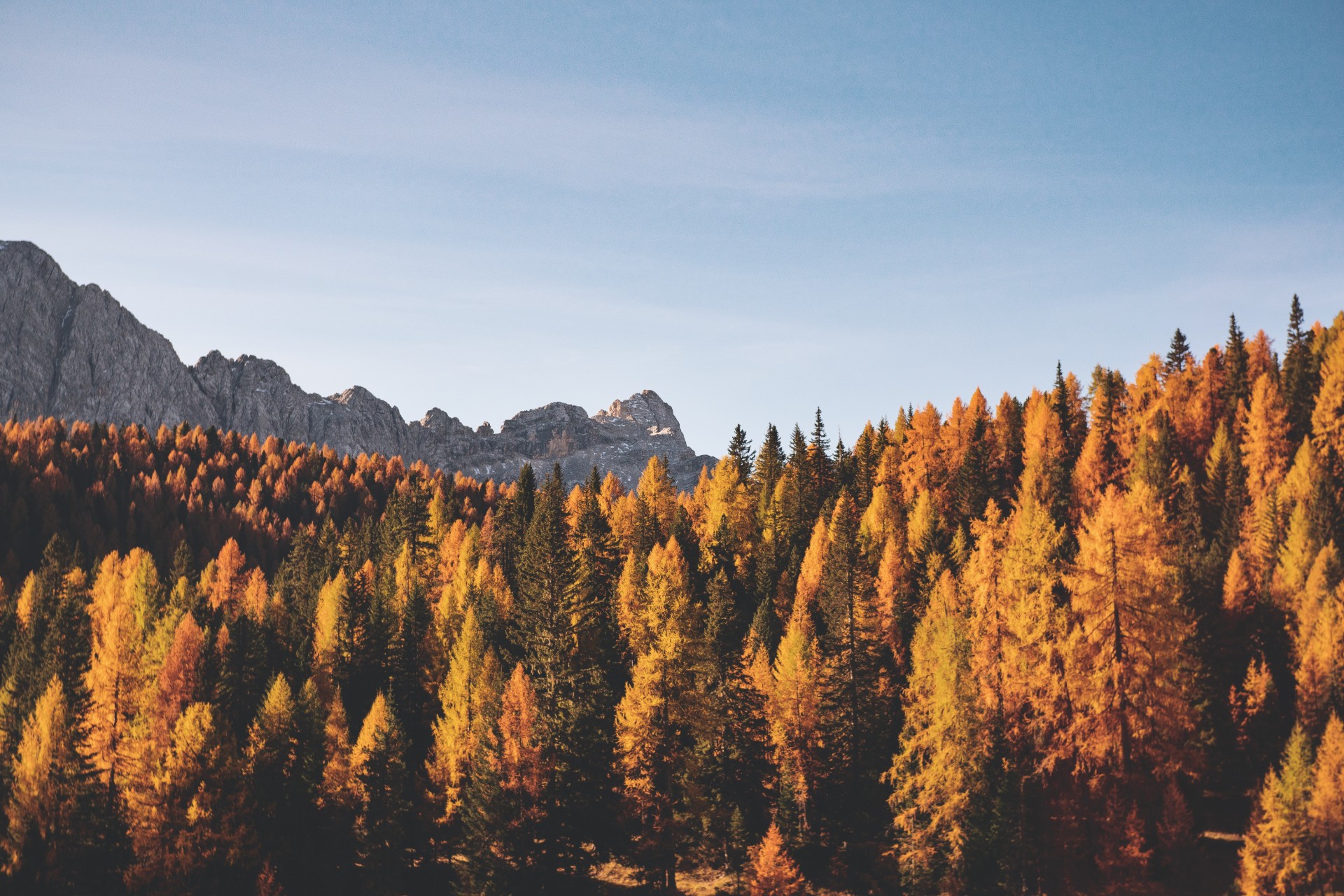Onsen is the Japanese name for a hot spring. Due to Japan’s geographical location, natural, mineral-rich thermal waters rise from beneath the surface to supply these hot springs. These volcanic waters are believed to provide health benefits such as relief from stress, skin problems, muscle aches, and other ailments. With a recorded history dating back to the second half of the first century, onsens have upheld strict onsen etiquette. Fortunately, this traditional experience has withstood the test of time, remaining popular with today’s young and old. Over 2,000 onsens can be found all over Japan, ranging from outdoor and indoor baths to the more modern and quirky onsen theme parks.
Going to a traditional Japanese onsen may seem intimidating to many. However, onsen etiquette is, in fact, generally easy to follow. Our complete guide to Japanese onsens gives you the lowdown on onsen etiquette. Our guide also includes some cheeky picks of our favorite unique onsens that seem to bend the traditional onsen etiquette rules. Read on to find out more!
What do I bring to an onsen?
Before you embark on your trip to a Japanese onsen, here are a few things you can take with you to ensure a smooth and comfortable experience:
- Money: While some onsens are free for public use, some require bathers to pay a small fee for use. Additionally, small change is handy if you get hungry as food and drink options are available at some onsens.
- Towels: Upon entering an onsen, most onsens will hand you a small face towel and a large towel. Only take the small face towel with you. The large towel is meant for drying off your body after the bath and not permitted into the communal bath zones. Be sure to check if the onsen provides towels; some charge a nominal fee for the rental of towels or require bathers to bring their own.
- Personal toiletries: Most onsens provide basic toiletries like body wash, shampoo, and conditioner, but you can never be sure! Bring a miniature version of your favorite toiletries to enhance your onsen bath experience.
- A small bag: Bring a small bag to keep the abovementioned items. Some onsens provide lockers or shelves to house your belongings. While it is relatively safe, it is best not to bring anything valuable to an onsen.
What do I wear in an onsen?
Birthday suits only! Onsens in Japan typically do not allow patrons to wear any clothes or swimsuits into hot springs. While this rule may cause the most hesitation, it has been a long-standing tradition for Japanese onsens, and honestly, most hot spring goers do not bat an eye. It is also considered rude to stare, so be respectful of the rules to keep the onsen environment comfortable and enjoyable for everyone.
If this rule makes you nervous, alternatives are available so that you do not miss out on your onsen experience. Many traditional Japanese inns, known as ryokans, have private baths available on request.
Takaragawa Onsen
Located in the mountains of the Gunma prefecture, the spectacular Takaragawa Onsen boasts some of the largest and most famous outdoor baths in Japan. Unlike traditional onsens, nude bathing and the use of swimsuits are not permitted. Instead, Takaragawa Onsen requires you to wear a bath dress while you soothe your stresses away. Additionally, this is a mixed-gender bath, perfect for a romantic couples getaway. Women-only and male-only baths are also available.
A visit to Takaragawa Onsen is not without exploring the surrounding area. This picturesque onsen boasts some of the most scenic sights in Japan throughout the seasons. Take in the fairytale-like views during fall as falling momiji leaves blanket the surrounding forest in red and gold hues. During winter, relax in a dreamy wonderland as white snow drapes the surrounding trees and rooftops. If you are here for the weekend, book a stay at Takaragawa Onsen Osenkaku for the full onsen experience. This elegant ryokan provides the ultimate authentic Japanese experience, complete with yukatas and delicious Japanese cuisine prepared with local ingredients.
Are tattoos allowed in onsens?
You’ve probably heard of this strict onsen etiquette: no tattoos allowed. For a long time, tattoos have been heavily stigmatized in Japan for their association with organized crime groups known as the yakuza. Tattoos were a symbol of a criminal and were even outlawed by the rulers of the Edo period. Today, the no-tattoo rule still stands in many places including onsens, gyms, swimming pools, and bathing facilities.
However, with the rising prevalence of tattoos in popular culture today, and with the increase of foreigners traveling to Japan, some leeway has been made for this rule. If you have a small tattoo, you may still be allowed to enter an onsen by covering it up with a plaster or a bandage. Some Japanese companies also manufacture and sell waterproof tattoo covers! Alternatively, opt for a private bath at your ryokan or research tattoo-friendly onsens (check out our recommendation down below!). While it seems that you can get away with someone noticing your tattoo, we encourage you to check with the onsen’s regulations before entering.
Kinosaki Onsen
Several onsens in Japan have been increasingly receptive to tattoos allowed in their onsens. One of which is the ancient Kinosaki Onsen Town that dates back to the 8th century. Go onsen hopping to its seven uniquely different bathhouses and take a stroll in your yukata to visit vintage arcades and local establishments.
Though Kinosaki Onsen Town is steeped in history, the town is tattoo-friendly. Guests with tattoos, big or small, are allowed in all seven bathhouses. However, some accommodations or ryokans located within the town may have different onsen rules regarding their own in-house onsens, so check before frequenting their onsens. Read our comprehensive guide on the 1,300-year-old Kinosaki Onsen Town here!
Should I bathe before entering an onsen?
While it may seem strange to take a bath before entering a bath, the Japanese believe it is essential to be clean before bathing in a communal hot spring. Every onsen has a row of showers right outside the bath. Before stepping into the hot spring, sit down on one of the stools provided to give yourself a quick rinse. While standing may seem more natural, sitting prevents splashing on others. Wash your hair and remove your makeup here with the soap and toiletries provided at many onsen establishments. Rinse thoroughly and be considerate – you must be clean and free of soap suds before you step into the hot spring pool to relax.
After relieving your stresses in the onsen, step out to take another quick rinse under the shower. Onsens are known as a place to soak and relax, so it is important to be respectful of the onsen etiquette.
Beppu Onsen Hoyoland
Beppu Onsen Hoyoland seems to throw the golden rule of being clean out of the window. This rare and peculiar onsen features a spacious open-air mud bath and steam baths, a far cry from the conventional hot water baths. Elevate your clay mask experience here as the onsen encourages bathers to slap mud directly onto the skin to reap the benefits of its healing properties. Beppu Onsen Hoyoland’s mud baths are believed to relieve bathers from health issues, providing benefits such as reduced neuralgia and clear skin.
Beppu Onsen Hoyoland’s unique mud baths are supplied by a well-known thermal springs system called the “Hell of Beppu”. Travelers can view this system that consists of seven hot springs. Bubbling mud emerges from steaming thermal pools, adding to the hot spring’s otherworldly allure. Other than their famous mud baths, take a dip into the blueish hues of their colloid bath or step into their steam baths that promise youthful skin. Don’t forget to follow onsen etiquette closely – you are still required to clean yourself before entering the onsens here, including the mud bath.
What do I do with my hair?
Upon entering an onsen, most onsens will hand you a small face towel and a large towel. Do not get the small towel wet! Most people relax by putting the towel on their heads, holding it in their hands, or using it to wipe their sweat off. Your head and hair should be kept out of the water. If you have long hair, pack a hair tie to tie your hair up before entering an onsen.
Shirahone Onsen
A trip to Shirahone Onsen is like no other. Located in Matsumoto city in Nagano Prefecture, this 600-year-old hot spring is known for its milky white onsen water. The hot spring’s nearly-opaque appearance is derived from a mixture of calcium and hydrogen sulfide, causing the water to be slightly acidic in nature. Relieve your worries as you bathe in these waters believed for many centuries to be capable of curing illnesses and injuries. Legend has it that spending three days in these waters will keep any illness away for three years.

Awanoyu Ryokan is home to Shirahone Onsen’s iconic outdoor baths. Most photographs you see of the Shirahone Onsen area are of Awanoyu Ryokan as its scenic outdoor baths and elevated cascading thermal water platforms are a photographer’s paradise. As it is a mixed-gender onsen, women can wrap themselves with a large towel to keep on in the baths. Gender-separated indoor baths and a female-only outdoor bath is also available. If you feel self-conscious, find comfort in the onsen’s bone-white waters – you can barely see anything beneath the surface!
Can I go swimming in an onsen?
Onsens are a place for relaxation and rejuvenating. Swimming, jumping, cannon-balling, and other similar acts are not allowed in the onsen.
Onsens require its bathers to be considerate to other patrons. When entering an onsen bath, begin by slowly dipping your toes in the water. To avoid rapid changes to your body temperature and blood pressure, take your time as you enter the onsen. While inside, refrain from spreading eagle and floating across the surface of the onsen. Onsen facilities also restrict eating, reading, or drinking in onsens. We encourage you to sit still to best enjoy the meditative nature of these healing waters.
Jogokudani Monkey Park
Speaking of a quiet and meditative onsen experience, make a visit to Jogokudani Monkey Park. Enjoy precious encounters with Japanese macaques, also known as snow monkeys, and watch as they spend their time soaking in the park’s hot springs. All year round, these monkeys emerge from the surrounding cliffs and forests to seek warmth in the park’s outdoor onsens before returning to the forest by nightfall.
As many locals and tourists have come to see this fascinating sight, the monkeys have mostly become accustomed to the presence of humans. However, these monkeys are still wild animals – you mustn’t touch or feed them. Keep a safe distance and respectfully observe these creatures.
Can I speak to my friends in an onsen?
While there are no strict regulations against noise, most onsen environments are tranquil and peaceful. The best thing you can do is to gauge the environment of the baths. Shouting or speaking very loudly is frowned upon.
People enjoy coming to the onsen by themselves or with friends to ease their stresses in the still atmosphere. Generally, no loud music is played at the onsen. You often hear peaceful sounds of the onsen’s trickling waters and the murmur of bathers chatting away. Someone might even strike up a conversation with you while in the baths!
Solaniwa Onsen

Far from the traditional quiet and still onsen is Solaniwa Onsen, the world’s biggest hot spring theme park. You read that right. Located at Osaka Bay Tower, this sprawling theme park spans more than 16,500 square meters and features a combination of both traditional and modern onsen facilities.
Before you enter, you are issued with an electronic keycard for purchases all around the theme park. Pick your favorite yukata and snap the perfect Instagram photo around the interior of Solaniwa Onsen, which is designed after a 16th-century Japanese town. In addition to lounging in the park’s nine different indoor and outdoor hot springs, be spoiled silly by the wide variety of activities offered here. From entertaining summer splash shows to daily dance performances, this atypical onsen adventure is a must-do when you are in Osaka.
Can I enjoy my alcohol in an onsen?
Many onsens serve alcoholic beverages such as sake and beer and it may be tempting to have an ice-cold pint in your onsen. However, eating and drinking are not permitted in an onsen.
Some onsens also discourage their patrons from drinking alcoholic beverages before and after a bath in the onsen. According to the Onsen Medical Science Research Center, drinking alcohol before entering an onsen may be deadly to the heart or cause a rapid change in blood pressure. Drinking alcohol after a bath may also cause dehydration and lightheadedness. We recommend that it’s best to put away that drink and save it for later!
Yunessun Hot Springs Resort and Spa
This hot spring resort takes alcohol in your onsen to a whole other level. Yunessun Hot Springs Resort and Spa has some of the most exotic and unbelievable hot spring baths, including a red wine bath, a first-of-its-kind coffee bath, a Japanese sake bath, and a green tea bath.
A seemingly strange custom dating back to the ancient Egyptian times of Cleopatra, red wine baths were often thought to rejuvenate the skin. Live like a queen as you take a dip in the vividly red and fragrant waters of Yunessun Hot Springs Resort and Spa’s red wine bath. Don’t drink it! Instead of taking a gulp from your bath, wait until the daily “wine shows” when spa workers will come out to spray bathers with Hakone wine. Looking for more beverage-related baths? Enjoy the resort’s Japanese sake bath that comes straight from a giant sake barrel, or go green in a soothing green tea hot spring.
Enjoy yourself!
Last but not least, the most important rule of all: enjoy yourself. Onsens can be a completely new and daunting experience for many. Going into a bath with naked strangers might seem strange, but the Japanese have been doing it for years. We hope this guide to onsen etiquette has allayed your fears of taking part in this authentic Japanese experience.
Know of any fun and quirky onsens? Let us know!
About TourHero
TourHero is a social travel platform that enables you to travel with like-minded people and fall in love with the journey. We work closely with handpicked local operators to ensure every experience curated is unique and exclusive to your travel group. Come with us on epic adventures and create memories that last a lifetime!










